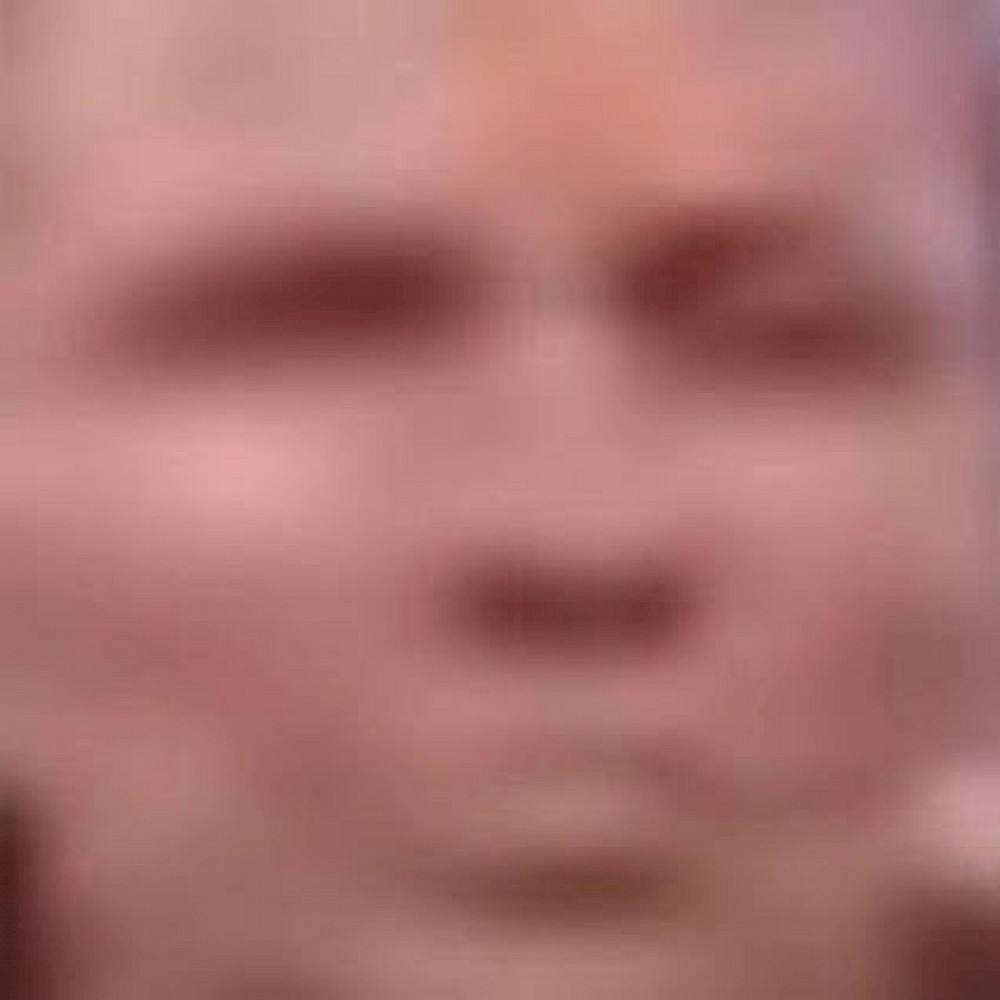Stephanie Bunk
Potential Sightings
 Volker Renner, potential sightings (X3bX08cgxZ14_48_5041), 2021. Courtesy the artist
Volker Renner, potential sightings (X3bX08cgxZ14_48_5041), 2021. Courtesy the artistThe website Faces of the Riot went online within weeks after the storming of the U.S. Capitol on January 6, 2021. It gathers the faces of around six thousand people presumed to have participated in the assault on democracy. What makes this material particularly unsettling is that the images were self-generated. Of their own volition, individuals uploaded their images to “alt-tech” social networking sites such as Parler to brag about their exploits to fellow conservatives and right-wing extremists. However, far from serving as a gallery of profiles in courage, Faces of the Riot is reminiscent of medieval pillory or “Wanted” posters. In actuality, the hunters were themselves hounded by a wider public audience as well as investigated by the FBI, which has since relied on the site as a source of criminal evidence. Yet the practice of publishing photographs that are revealing of personal data also raises concerns over the legal overreach of surveillance through algorithmic processes.
Not long after these images were published, the artist Volker Renner browsed Faces of the Riot and selected approximately four hundred for potential sightings, a series that was published in book form earlier this year. With an emphasis on their features, Renner compresses these profiles to produce a panorama of alarm and horror, the inhuman and alien. The phrase “potential sighting” is typically associated with extraterrestrial life, animals, or people who are presumed dead. But here, the failure of facial recognition suffuses the images with a painterly abstraction that recalls depictions of agony in the work of Edvard Munch or Francis Bacon. The shift in context transmutes not only the faces, but the meaning of the original images taken on personal devices as well. These are simultaneously trophies of victory and police sketches, pieces of evidence and works of art, conferring photography as a cultural currency of mutable force.
„Potential Sightings“
Die Website „Faces of the Riot“ ging nur wenige Wochen nach dem Sturm auf das US-Kapitol am 6. Januar 2021 online. Dort findet man die Gesichter von etwa 6.000 mutmaßlich an dem Angriff auf die Demokratie Beteiligten. Das Brisante daran ist, dass das Material von den Täter*innen stammt. Denn sie haben selbst ihre privaten Aufnahmen auf Seiten wie der Social-Media-Plattform „Parler“ hochgeladen, um sich mit ihrer Aktion vor Gleichgesinnten zu brüsten. „Faces of the Riot“ dient nun aber gerade nicht der Held*innenverehrung. Die Seite erinnert eher an einen mittelalterlichen Pranger oder an Fahndungsplakate, welche die Jäger*innen zu Gejagten der öffentlichen Meinung und des FBI machen, das die Seite für die Strafverfolgung nutzt. Doch dieses Vorgehen der Veröffentlichung von privaten Fotos wirft auch Fragen nach der Legalität und der Überwachung durch Algorithmen auf.
Der Künstler Volker Renner hat sich sämtliche Gesichter der „Faces of the Riot“-Website angesehen und daraus eine Auswahl von ca. 400 Gesichtern für seine gerade in Buchform erschienene Serie „Potential Sightings“ (2021) ausgewählt. Indem er sich auf die unscharfen Abbildungen konzentriert, verdichtet und vereinheitlicht er die Gesichter zu einem Bild des Schreckens und des Horrors, des Unmenschlichen und des Fremden. So assoziiert man mit „Potential Sightings“ die Sichtung von Aliens, Tieren oder Totgeglaubten. Gleichzeitig liegt in der gescheiterten Gesichtserkennung auch eine malerische Qualität der Abstraktion, die an Darstellungen des Schmerzes bei Edvard Munch oder Francis Bacon denken lassen. Durch den Wechsel des Kontextes mutieren nicht nur die Gesichter, sondern auch die Bedeutung der ursprünglichen privaten Handy-Aufnahmen verändert sich. Sie sind Siegestrophäen und Fahndungsbilder, Beweis-Fotos und Kunstwerke, die das Foto als kulturelle Währung reflektieren.
© 2022 8th Triennial of Photography Hamburg 2022 and the author